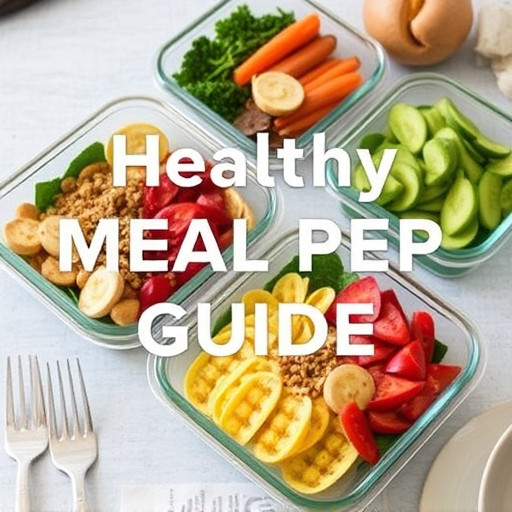The Whole30 Diet is a 30-day program focusing on whole foods while excluding common triggers like sugar and processed foods. Prep your kitchen, plan meals, stay motivated, track progress, and maintain healthy habits post-program for optimal results, aiming for holistic improvements in energy, digestion, and mental clarity.
Considering a Whole30 diet? This comprehensive guide will equip you with all you need to know and do before, during, and after this 30-day dietary reset. We’ll break down the core principles and rules, offering a clear understanding of what to eat and avoid. Learn how to strategically stock your kitchen, plan meals, stay motivated, and track your progress. Additionally, discover best practices for maintaining your healthy habits post-Whole30. Get ready to transform your diet and well-being!
- Understand the Whole 30 Diet: Rules and Principles
- Stock Your Kitchen: Foods to Include and Avoid
- Meal Planning and Recipes for Success
- Stay Motivated and Track Your Progress
- Post-Whole 30: Maintenance and Next Steps
Understand the Whole 30 Diet: Rules and Principles

The Whole 30 Diet is a 30-day program designed to reset your body’s relationship with food, focusing on whole foods and eliminating various categories of common dietary triggers. The diet emphasizes real, unprocessed foods while temporarily excluding sugar, alcohol, grains, legumes, dairy, and certain other food groups. Understanding these rules and principles is crucial for success.
During this period, you’ll need to avoid not only the listed foods but also any additives, artificial ingredients, and highly processed items. Meal planning and preparation are key; ensuring every meal aligns with the diet’s guidelines can help prevent slip-ups. Keep in mind that the goal is not just weight loss but also improved energy levels, better digestion, and enhanced mental clarity—a holistic approach to nutrition.
Stock Your Kitchen: Foods to Include and Avoid

Before starting your Whole30 journey, it’s crucial to stock your kitchen with approved foods while removing any that don’t meet the program’s criteria. Focus on whole, unprocessed options like fresh fruits and vegetables, lean proteins (such as chicken, fish, and tofu), healthy fats (including avocado, olive oil, and nuts), and dairy-free milks and cheeses. These form the backbone of your meals during this 30-day period.
On the other hand, you’ll need to avoid certain categories entirely. This includes any processed foods, sugars (both added and natural), alcohol, grains (such as wheat, rice, and pasta), legumes (beans, lentils, and chickpeas), and certain vegetables like potatoes and tomatoes. Additionally, artificial additives, colorings, and flavorings are not permitted, so read labels carefully to ensure compliance.
Meal Planning and Recipes for Success

Meal planning is a crucial part of successfully completing a Whole30. Taking time to plan your meals in advance can ensure you stick to the diet’s guidelines and avoid last-minute decisions that might lead to slip-ups. Start by familiarizing yourself with the allowed foods, which include lean proteins like chicken, fish, and eggs; healthy fats such as avocado and olive oil; fruits and vegetables in abundance; and nuts and seeds for snacks.
Consider your favorite recipes and adapt them to fit the Whole30 rules. There are countless online resources and cookbooks dedicated to this diet, offering delicious and creative ideas. From breakfast options like quinoa oatmeal with fruit and nut butter to hearty lunch salads with grilled chicken or tofu, and dinner dishes like salmon with roasted vegetables or beef stew—the possibilities are endless. Having a variety of recipes ready will make meal times enjoyable and help you stay on track.
Stay Motivated and Track Your Progress

Staying motivated throughout your Whole30 journey is key to success. Set clear goals, remind yourself of the benefits you hope to achieve, and celebrate small wins along the way. Share your progress with friends or family for accountability, or join a community of like-minded individuals who can offer encouragement and support.
Tracking your progress visually can also be incredibly motivating. Keep a food diary, take weekly photos, or measure key body metrics to see how your body is responding to the diet. This tangible evidence of your hard work will help keep you on track and inspired to complete the full 30 days.
Post-Whole 30: Maintenance and Next Steps

After completing a Whole30, many people wonder what comes next. The key to long-term success is maintaining the habits cultivated during the diet. This involves continuing to avoid processed foods and focusing on whole, unprocessed meals. Start by restocking your pantry with healthy options like fresh fruits, vegetables, lean proteins, and whole grains. Plan your meals in advance to ensure you have nutritious choices available.
Regular exercise should also become a permanent part of your routine. Incorporate a mix of cardio and strength training activities that you enjoy to maintain overall fitness and keep your body energized. Additionally, staying hydrated is essential, so make water your primary beverage. Keep track of how you feel and any changes in energy levels, digestion, or mood, as these insights will guide future dietary decisions and help tailor your eating habits to your unique needs.
Prepping for a Whole 30 diet involves understanding its core principles, stocking your kitchen with approved foods, planning meals in advance, staying motivated through tracking your progress, and considering your next steps post-program. By following these steps and embracing the diet’s focus on whole foods, you’ll be well on your way to achieving a healthier lifestyle.
